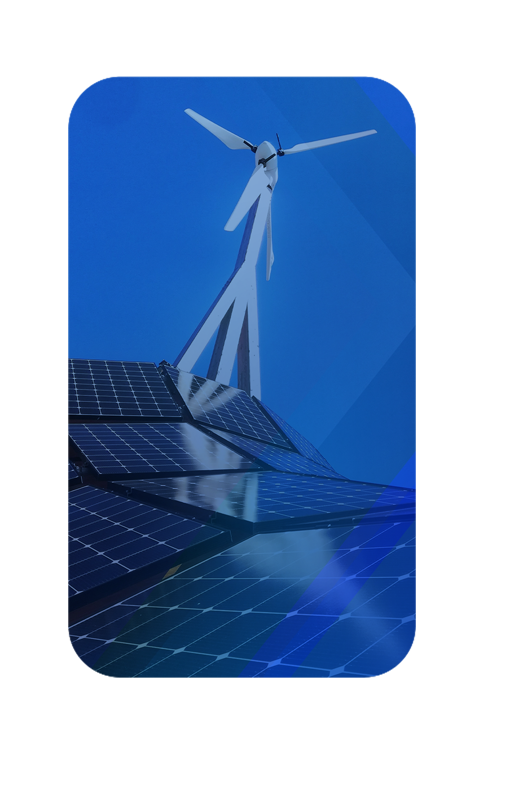
Modernizing and Expanding our Electrical Grid
Think of the technological changes that have occurred over the past five years. Now, think about the changes over the last 10 years. Ok, what about 20 years?
Looking at how we live day to day in 2023, the year 2000 may be just as unrecognizable to the general public as the year 1975 or even earlier. So, as technology has evolved, the means to generate, transmit and deliver the energy to power it needs to do the same.
Here’s the brass tacks. Our electrical transmission grid stands as one of the most complex machines in human history. Still, it began as a two-lane road with energy running in one direction or the other. As technology has changed, it’s put greater demands on the electrical grid. We’re essentially trying to change this two-lane road into a multi-lane expressway with energy moving in different directions at different speeds.
Modernizing and expanding our electrical grid is of critical importance. In North America and around the globe, our economy, security and health and well-being increasingly depend on the reliable delivery of electrical energy. At the same time, day by day, we need to rely more on clean energy for our planet to survive.
So, what is involved with modernizing our electrical grid? And how are we at JFE Shoji Power Canada (JFE) working and innovating to help us get there? Why don’t we start from the beginning?
Electrical Grid Modernization is the development of new tools, concepts and technologies that support in making our grid more efficient and resilient.
Our electrical grid: Yesterday and today.

The origins of our electrical grid go as far back as the 1880s. The beginnings were as simple as two electricians in the United Kingdom powering 12 light bulbs with a setup of two waterwheels. Though it may sound rudimentary, this early invention set the wheels in motion for future scientists and engineers to create the power grid we use today.
Currently, Canada and the United States share one of the most integrated electrical grids, with 35 major transmission lines reliably connecting and powering homes and businesses on both sides of the border. In doing so, the electrical grid performs two critical tasks:
- Connection. It is the structure for ensuring energy is delivered where and when it’s needed; and
- Continuity. It maintains the continuous flow of electrical energy no matter how the supply and demand change.
To maintain a high level of performance in the face of increased demand, we need rapid changes to the grid to accommodate evolving technology. In modernizing the individual management systems of the grid, we need to renew and replace old and outdated equipment. Plus, we need to expand the grid’s capacity for both new electrical energy sources, and new electrical uses, so we can rely less on oil-based fuels.
As recently as 2019, fossil fuels were still used to produce over 60% of the energy generated in the United States.
Currently, our grid will not support a transition to renewable energy sources. So, in order to reach global climate goals for 2050, modernization is crucial.
Modernization is easier said than done.
It’s not hard to see the argument for modernizing the grid. The problem is that execution gets far more complicated.
On the basest level, renovating and replacing power lines and electrical equipment is quite costly. As we outlined in a previous article on the Top 5 Energy Industry Trends for 2023, a shift to energy decentralization will lower the amount of electricity distributed through our grid. That means fewer transmission losses and, with less strain on them, more sustainable power lines.
As well, maintaining the security of our electrical grid continues to be a massive challenge. One drawback from modernization is that cyber-attacks have become a viable threat. There have already been cases of hackers tapping into energy companies’ systems and exposing thousands of households to blackouts.
All stakeholders are responsible for the grid’s security and stability. This means industry partners and governments must collaborate and communicate in order to safeguard them.
“From province to province, from state to state, within Canada and the U.S., modernization requires an extremely high level of collaboration between all the partners involved.”
Ron Harper, CEO
JFE Shoji Power Canada
Energy opportunities are out there.
One industry innovation that will play a key role in modernizing the grid is increasing the renewable energy sources it accesses. According to a 2021 report, by 2026, the global renewable capacity is forecast to rise to more than 60% over its 2020 levels. In Canada, this leap is driven by governmental policies and stronger support from the general public in working toward a more sustainable earth.
At JFE, we’re proud to be a part of the solution when it comes to grid modernization. In particular, we are working on three primary tasks to expedite the initiative:
- Improving electrical efficiency of the products we provide. A key part of renewing and rebuilding the electrical grid is ensuring that we’re being as efficient as possible with the materials and processes we use.
- Expanding our electrical energy capacity. To accomplish this task, we’re increasing the availability and capacity of our products and services so we can meet the growing demand for electrical steel components needed to operate power transformers, generators and motors within our society.
- Generating power through offshore windmills in Japan. Through collaboration with our sister company JFE Steel and the Japanese government, JFE is responsible for maintaining the supply of components to ensure that we can develop this electrical source.
The task of modernizing and expanding the electrical grid is a truly important one. At JFE, we are dedicated and committed to working with governments, our clients and industry partners to ensure that all updates are made so lights remain on, in a sustainable and environment friendly way, across Canada and the globe.
